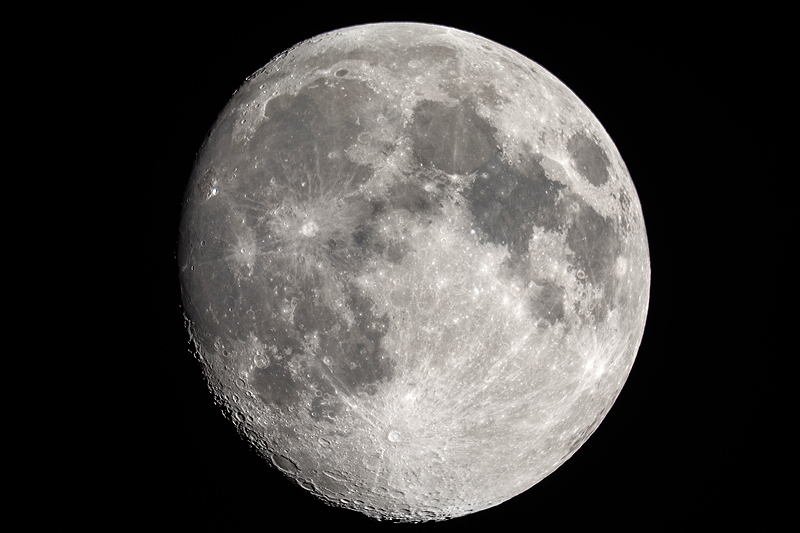Short Session of Moon and Planets Observing
Posted: 5 August 2017
|
Open: Friday, 4 August 2017, 1830 MST Temperature: 86°F |
Session: 1135 Conditions: Partly cloudy |
Equipment Used:
12" f/8 LX600 w/StarLock
2" 24mm UWA eyepiece
2" 9mm 100° eyepiece
Camera:
D7200 DSLR
Due to Monsoon Season clouds and storms I had last opened the observatory on 11 July 2017. So even though the sky was partly cloudy I was thrilled to be able to finally open the observatory again.
I SYNCed the observatory clock to WWV.
Shortly after opening the observatory I heard thunder from this little storm cloud to the east:

1842 MST: LX600 ON, StarLock OFF, High Precision OFF.
1845 MST: viewed Jupiter, 102X. No moons were yet visible against the still bright sky.
1848 MST: the thunder had ended but I started feeling some sprinkles of rain! I re-covered the telescope aperture. I was hoping to view the waxing gibbous Moon this night but that was beginning to look doubtful.
1856 MST: no more sprinkles. Uncovered the telescope aperture.
1857 MST: Wi-Fi ON. Did some tests of the iOS app ScopeBoss for the developer. Tests ended. 1914 MST: Wi-Fi OFF.
The clouds were decreasing now. The Moon was visible in the southeast. 1926 MST: crepuscular rays were visible passing by the Moon after sunset, as seen in this iPhone photo:

1959 MST: last look at Jupiter, 102X and 271X. The four Galilean Moons were visible. Io's shadow was in transit across the planet's disk.
Then viewed the Moon, 102X. Began setting up to image the Moon using the D7200 DSLR. This would be my first test of using my new Right Angle Viewfinder at the telescope. I mounted the DSLR at prime focus + focal reducer. This is the Moon, 1/320sec, ISO 100:

I will post my review of the Right Angle Viewfinder soon.
2020 MST: removed the camera and viewed Saturn, 102X and 271X. Seeing was not very good with clouds nearby, but the Cassini Division in the Ring System and four moons were visible.
Lightning was visible to the west and southeast. I began closing up. It was nice to have been back in the observatory again.
2025 MST: LX600 OFF.
|
Close: Friday, 4 August 2017, 2033 MST Temperature: 80°F |
Session Length: 2h 03m Conditions: Partly cloudy |
Comments are welcome using Email. Twitter users can use the button below to tweet this report to your followers. Thanks.
Cassiopeia Observatory Home Page
Copyright ©2017 Michael L. Weasner / mweasner@me.com
URL = http://www.weasner.com/co/Reports/2017/08/05/index.html
